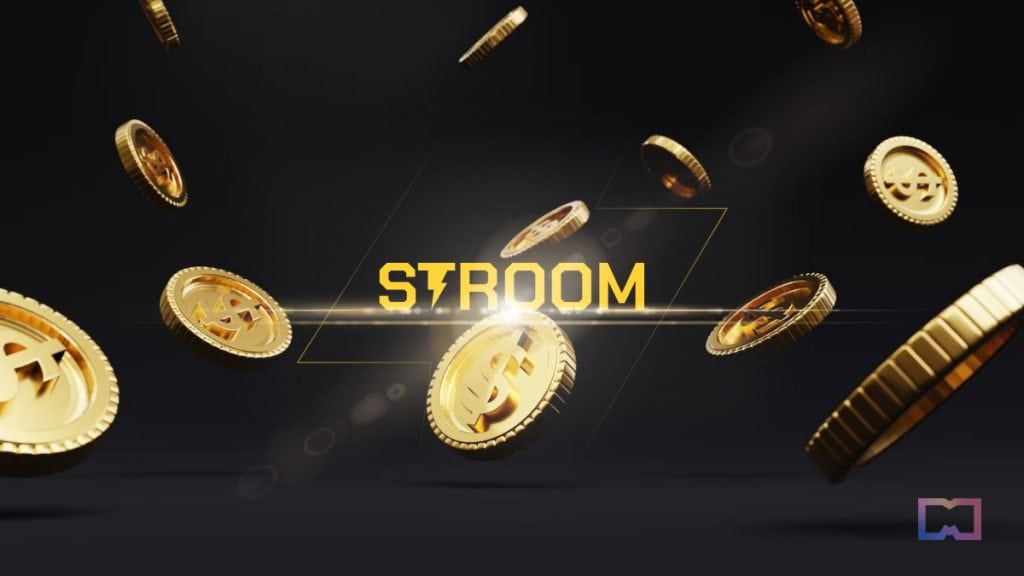Stroom Network Successfully Secures $3.5 Million in Seed Investment for Their Liquid Staking Protocol Utilizing Bitcoin's Lightning Network.
In Brief
Stroom Network, a protocol focusing on liquid staking within Bitcoin’s Lightning Network, has successfully obtained $3.5 million in seed funding.
The funding round, primarily led by Greenfield Capital, saw additional participation from entities like Lemniscap, No Limit Holdings, Cogitent Ventures, and various other venture capital firms.
The funds raised will empower Stroom to grow its team and roll out the Liquid Staking Protocol on Ethereum's mainnet.

Stroom Network, an innovative liquid staking protocol operating on Bitcoin’s Lightning Network, has brought in $3.5 million in seed funding.
The funding round was primarily driven by Greenfield Capital, with contributions from Lemniscap, Ankr’s mission-driven arm Mission Street, No Limit Holdings, Cogitent Ventures, and several other investors.
According to Greenfield Based in Kyiv, Stroom facilitates seamless BTC liquidity to the Lightning Network through its unique liquid staking protocol, enabling stakers to earn fees using yield-generating DeFi-compatible lnBTC tokens on the Ethereum network without needing to run their own node.
A specialized node operator is tasked with overseeing payment routing within the Lightning Network, and retains a portion of the income generated from BTC liquidity via the liquid staking services offered by Stroom.
Greenfield Capital points out that by supplying BTC to Stroom, Bitcoin holders can actively engage in the expanding market of channel liquidity within the Lightning Network.
The investment firm elaborated, \"The yield-generating liquid staking token, lnBTC, possesses the same composability as WBTC, thus allowing it to serve as collateral or security in various financial derivatives, while also providing an inherent yield that WBTC lacks. Consequently, this results in enhanced (and diversified) returns for BTC holders.\"
The fundamental premise behind Stroom is that the Lightning Network, initially conceived to scale Bitcoin, embodies a next-generation infrastructure for payments that features real-time settlement, horizontal scalability, minimal fees, and instant transactions.
In a Twitter thread, the company said Despite its advantages, the Lightning Network has not yet achieved widespread adoption, largely due to a limited Total Value Locked (TVL) in the network.
"Our aim is to elevate the LN TVL by drawing Bitcoin-DeFi users into the Lightning Network. Stroom eliminates the dilemma between choosing DeFi or LN and enables users to optimize their BTC holdings across both networks concurrently,\" stated a representative of Stroom.
Stroom tweeted .
To meet its objectives, Stroom unveiled Liquid Staking Tokens (LST), which it describes as the backbone of its operational framework.
Liquid Staking Protocol Explained
In a Twitter thread, Stroom provided a deeper insight into LST, explaining that these tokens generate derivatives associated with the staked assets.
Typically, when assets are staked, they are confined in a locked state for a specified duration, hindering their trade or withdrawal during that timeframe.
Liquid staking disrupts this limitation by tokenizing staked assets, thereby producing derivatives that offer stakers enhanced flexibility. These liquid staking derivative tokens retain value equivalent to the amount originally staked by the users.
"By utilizing these liquid staking derivative tokens, assets of equivalent value can be deployed across various DeFi platforms while still accruing staking rewards,\" explained Stroom. \"This model encourages token holders to actively stake their original tokens, which in turn reinforces network stability and security. Specifically, in the context of the Lightning Network, it also leads to improved scalability and resilience.\"
Stroom’s strategy integrates lnBTC (LN-staked Bitcoin Wrapped on the Ethereum Blockchain) within the DeFi arena.
The Rise of Liquid Staking
Liquid staking protocols are gaining traction as they empower stakers to make their assets work for them without sacrificing their staking rewards. They also provide avenues to earn both staking rewards and additional yields via DeFi protocols.
Moreover, these liquid staking frameworks help to bridge the divide between Proof-of-Stake networks and DeFi ecosystems by allowing staked assets to act as collateral for lending or borrowing functionalities.
In recent months, there have been several liquid staking initiatives that have successfully garnered funding, highlighting a rising interest in the liquid staking domain. Maverick Protocol and EtherFi It's important to emphasize that the information contained on this page should not be construed as legal, tax, investment, or any form of professional advice. Always invest only what you're comfortable with losing and seek independent financial guidance if you're uncertain. For more details, we recommend reviewing the terms and conditions as well as the FAQ and support sections provided by the issuer or advertiser. MetaversePost strives for accuracy and impartiality in reporting, but please note that market conditions can change rapidly and without prior notice.
Disclaimer
In line with the Trust Project guidelines Cindy, a prominent journalist at Metaverse Post, focuses on areas spanning web3, NFTs, the metaverse, and artificial intelligence. She conducts interviews with key figures in the Web3 sector, having already engaged with over 30 C-level executives, bringing their insights to a wider audience. Hailing from Singapore, Cindy currently resides in Tbilisi, Georgia. She holds a Bachelor’s degree in Communications & Media Studies from the University of South Australia and has accumulated a decade of experience in journalism and writing.







